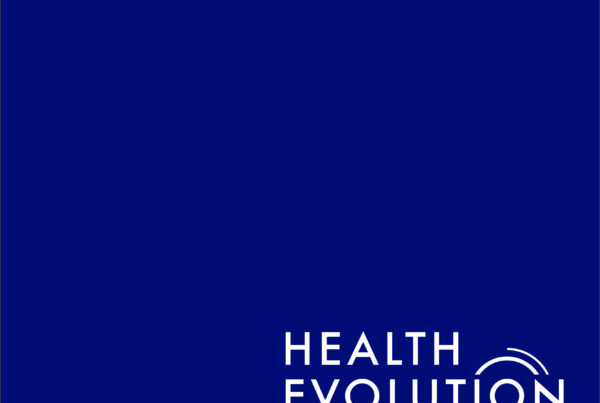Tosan Boyo is the President of Sutter Health’s East Bay Market. He joined Sacramento-based Sutter Health in September 2023 after serving in leadership roles in several organizations across the Bay Area. Tosan is committed to creating a more equitable health care system and serves as a Co-Chair of Health Evolution’s Roundtable on Data-Driven Health Equity Strategies.
Health Evolution interviewed Tosan about his career journey, philosophy for advancing health equity, advice for peers, and perspectives on having a creative outlet as an executive.
Q: Thank you for taking the time to talk today, and congratulations on your new role as President of Sutter Health’s East Bay Market. You have worked with a range of outstanding organizations in the Bay Area. What drew you to Sutter Health as the next step in your career?
Thank you for having me. The East Bay is the most diverse region in Northern California, and I’ve lived here for over a decade – it has become my home. The United States would not have been successful in driving the win of World War II without the East Bay. More World War II ships were built here than anywhere else in the U.S. The East Bay was a beacon of hope during the great migration for African Americans who fled the South to come to the west coast. The Free Speech movement was born here, and The Black Panthers were founded here. U.C. Berkeley, the number one ranked public university in the world is here, graduating more company founders than any other school on Earth. Oppenheimer was teaching theoretical physics in Berkeley when he was recruited to lead the Manhattan Project. The history of the East Bay is an inspiring tale that’s still being written. One that continues to shape California. This opportunity gives me the chance to advance health equity across Northern California.
In this role, I have the privilege of serving the East Bay Market, which encompasses six hospital operations and 16 ambulatory centers across three counties. It’s an opportunity to make a difference on a larger scale, improving access for all while ensuring no community is left behind as health care rapidly evolves. Health equity is my raison d’etre and I now have the privilege to advance it across Northern California.
Q: I love that historical context, as well as how personal this is—this your community. There is a lot to unpack, but let’s start with the expansion of your purview. Let’s talk about the shift from serving as SVP of Hospital Operations to becoming a Market President and having the full continuum under your leadership. How has that transition changed your perspective as a leader?
I’ve had extraordinary mentors that invested in me, and I was intentional about serving in ambulatory and acute care. The biggest difference in this role as a Market President is bringing together hospitals, clinics, medical groups, medical foundations, and ASCs. What’s also important, is leveraging community partnerships, because maintaining health takes place outside of the hospital and clinic walls. Closing these gaps and managing in the intersections is ultimately what social determinants of health is all about. As Market President, I’m constantly thinking about perfecting the integration of care across the continuum.
Q: Across your career, you have had such a heavy emphasis on caring for underserved communities, especially during the height of the COVID-19 pandemic. How have those experiences shaped how you think about advancing health equity—and the role of providers specifically?
I would say the biggest thing the pandemic did was spotlight the disparities many of us knew existed. Now everyone knew, so not acting to eliminate disparities became a choice. Ignorance was no longer an option or excuse. The way I look at health equity post-COVID-19, and now in my role as Market President – the null hypothesis should be “disparities are here” therefore we must find it, spotlight it, and eliminate it. Patients are getting sicker during the time spent debating if disparities exist, can we afford to address it, who should own it, etc. The null hypothesis nips it in the bud.
I’m inspired by future physicians because they are coming into residency asking questions about health equity. I’m very proud to say that we are launching a new residency program in the Sutter East Bay Market at Alta Bates Summit Medical Center which has been healing the East Bay since 1905. Post-pandemic residents have been letting us know eliminating disparities is why they got into medicine. The more diverse physicians and staff we have, the more likely patients see themselves in the care team, the more likely they’ll follow their treatment plan, and the more likely we are to see health outcomes improve.
Q: You are essentially alluding to your philosophy for how to advance health equity. We very much appreciate your service as a Co-Chair of Health Evolution’s Roundtable on Data-Driven Health Equity Strategies, where you have repeatedly emphasized that “equity work is quality work.” What do you wish other leaders knew about this approach to addressing disparities, especially given the amount of polarization and politicalization that we see in society right now?
In my mantra of “equity work being quality work,” the process is simple and clear, but it is so easy to be overwhelmed by the problems we are seeing in health care. Which makes it easier to walk away from and avoid diving into deeper root-causes. It’s the classic tyranny of urgency conundrum. Everything that’s important can’t be equally as urgent and vice versa.
What I want folks to take away from “equity work being quality work” is simply that in health care we’ll never stop striving for high-quality outcomes. Our patients and communities deserve our best so let’s add an additional step to quality with our equity lens and ask, “how do we validate and verify all our patients are achieving high-quality outcomes regardless of race, ethnicity, language and ZIPcode?” This is where stratification comes in. I push “equity work is quality work” because it’s independent of politics and payers. At minimum, stratify the most important quality metrics in your health plan and or health system. Make it visible to the organization and rally around any disparity gaps that need closing.
Q: And based on your experiences stratifying quality measures by demographics, have you been surprised by what you have found or was it largely what you expected?
I’m always surprised by the fear and/or apathy of doing the work. I’ve utilized my mantra in every organization I’ve been in and in some cases, upon stratification – you will discover disparities that disturb you. But then the question is, would you rather not know? And this is a second mantra I ask all the time. Would you rather not know there’s possibly a community of patients having worse outcomes? Ask yourself why is it easier to not prioritize the work to eliminate disparities? Choosing to not do so is antithetical to why we are called to serve in health care. One of my flaws is I deeply personalize things I care about even when it has nothing to do with me. Every time I see data about how non-English speaking patients have bad care experiences and limited access to care or Black and Native patients with higher readmissions, I feel like I’m failing. I feel a responsibility to fix it.
Q: I appreciate how you frame health equity in an inherently apolitical way. Health care leaders get up every day to deliver the best quality care that they can. Another way of helping to depoliticize is getting to know and understand people, to build personal connection. As you know firsthand, cross-industry collaboration is central to what we foster at Health Evolution. I’d love to hear how your experience as part of this community has influenced you as a leader and in your career journey.
From the moment I joined in 2018, Health Evolution has really pushed me to look at health care beyond the traditional delivery system. When I think about where we began with the Roundtable in 2020, one of the key things we started pushing for was how to bring life sciences into the health equity work. I had never considered that in my mind. It was just like, listen, hospitals and clinics, we’re the ones on the front lines. But then Health Evolution was pushing to say, you don’t have to do all these critical things by yourself. How much more of an impact can we have when we pull in other verticals that can transform the way we look at disparities? And then we also started asking ourselves – what does health equity work look like with clinical trials? What does health equity work look like with the pharmaceutical industry? That’s not a conversation I would ever have been a part of, much less even considered, if we didn’t have the Roundtable that pushed all of us to think about. Innovation is not just about the latest technology. Innovation is about thinking differently with some of the current resources and tools we have, but we just don’t always know about because we don’t have enough different voices in the same room to look at a problem from different lenses.
Q: I love that. We all have our individual vantage points, but what can achieve if we combine them together? Exactly what we want to accomplish. Thank you for such a thoughtful conversation today. I have more question in closing. You are a gifted writer and we have had the privilege of sharing your work, including “Trauma – The tyrannical time traveler.” How has writing has been a valuable outlet for you as a leader?
Writing has been cathartic for me. My pieces are written when emotions were visceral and raw. It’s a way to express and illustrate that pain, frustration, and insights in a way where all of us in health care can recognize it, understand it, be willing to talk about it and, more importantly, people who are not in health care can learn that health care workers are also in need of being cared for. I’ve spent the past year writing a piece on Medicaid. On December 1st, North Carolina will expand Medicaid making it the 40th state. Four out of five states in the union will have expanded Medicaid. Many people don’t understand Medicaid covers over 40% of U.S. births and over 60% of nursing home care. Essentially Medicaid covers the entire continuity of life. Can you name another U.S program with that scope? Yet it’s taken over a decade for coverage to expand beyond 75% of the Union. Medicaid expansion fundamentally eliminates disparities in ways we barely comprehend. I’d argue it’s the most impactful legislation to advance equity since the Civil Rights Act was passed. Although health equity is my raison d’etre, it isn’t about me… It’s about all of us. That’s why I write… why I do what I do.










